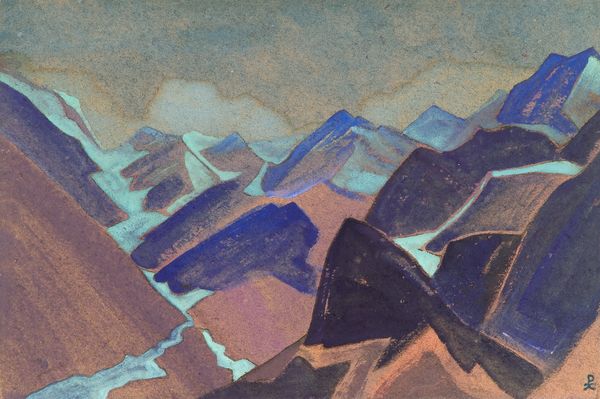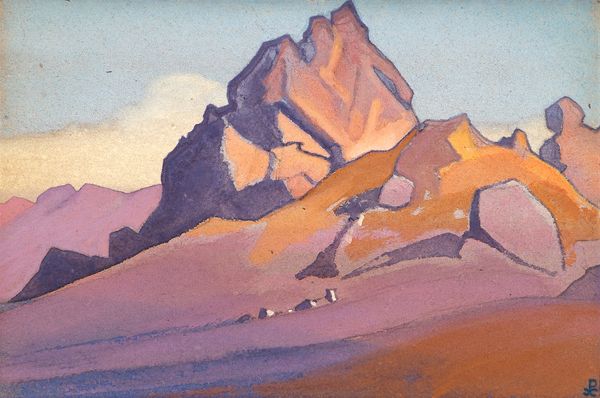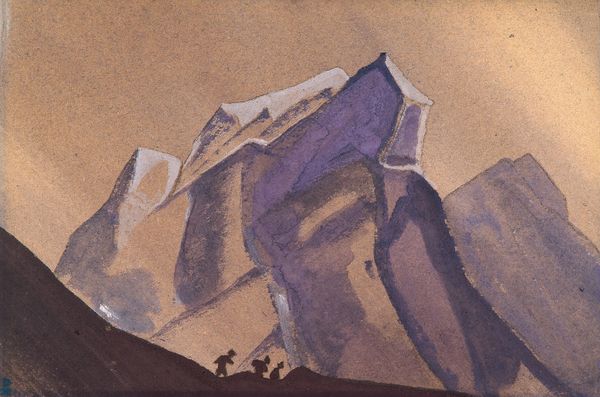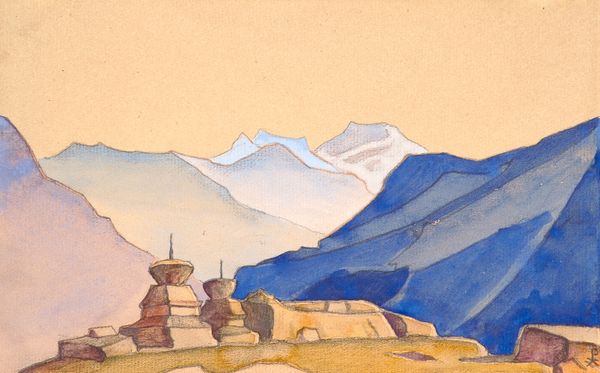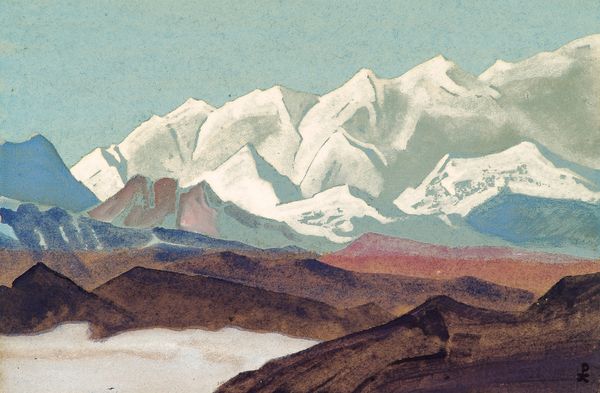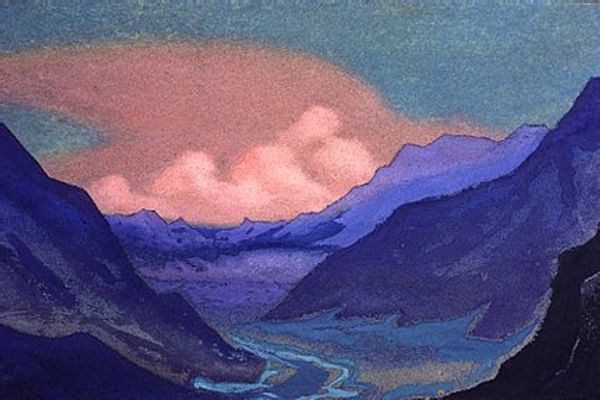
Baltistan (The border with Ladakh) 1936
0:00
0:00
nicholasroerich
Nicholas Roerich Museum, New York City, NY, US
Dimensions: 30.5 x 46 cm
Copyright: Public domain
Editor: So, this watercolour landscape is called "Baltistan (The border with Ladakh)" painted by Nicholas Roerich in 1936. I find myself really drawn to the earthy colour palette and simplified forms, it almost has a meditative quality. What stands out to you the most in this piece? Curator: Meditative, yes, that’s a perfect word. For me, it's how Roerich manages to capture the immense scale and spiritual weight of the Himalayas with such a pared-down technique. Look how he uses the watercolour to create a luminous effect, like the mountains are almost breathing. Have you considered Roerich's fascination with Theosophy? Editor: I know he was interested in spiritual movements, how does that link to Baltistan? Curator: Well, Roerich saw the Himalayas as more than just a geographic location; they were a gateway to a higher spiritual plane. The choice of watercolour – a medium often associated with transience and lightness – it makes it seems more of an otherworldly experience. See how he abstracts the landscape, moving away from realism and focusing on emotional resonance. Almost like trying to capture an essence rather than a perfect copy of reality. Don't you think so? Editor: That’s a really insightful observation about him trying to depict emotions. It's not just about accurately portraying a place. The use of watercolor does feel more deliberate now, creating this dream-like state. Curator: Exactly. It's as if he's inviting us to embark on a personal spiritual journey along this border. Now I’m curious what emotions that landscape invokes in you. Editor: I think I understand much better why this landscape invokes the meditative experience I felt when I first looked at this work, with that intent of creating a dream-like, spiritual world within this earthy rendering of mountains.
Comments
No comments
Be the first to comment and join the conversation on the ultimate creative platform.
